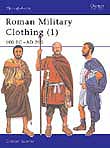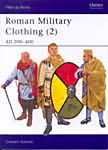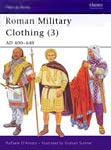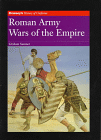
click here
|
A review of 'King
Arthur', the movie Graham Sumner
|
“Who
is this Arthur?” Cerdic (‘King
Arthur’).
King Arthur. Director’s Cut (DVD).
Touchstone Home Entertainment 2004
Directed
by Antoine Fuqua
Written by David Franzoni
Starring
Clive
Owen……….Arthur
Keira Knightly……Guinevere
Ray Winstone……..Bors
Ioan Gruffud………Lancelot
Stellan Skarsgard….Cerdic
Stephen Dillane……Merlin
Til Schweiger……...Cynric
My
initial reaction when I saw the first images from King
Arthur on the Internet was that this was a cheap British
version of Gladiator but at least some effort appeared to
have been paid to the armour and equipment. It turned out
that I was wrong on both counts!
The
first released pictures appeared to show a group of Roman
cataphracts equipped with draco standards. Initial
publicity announced that the film would depict a more
realistic version of King Arthur set during the more
historically correct Dark Ages rather than the medieval
period. The story itself was based on the attested
character of Lucius Artorius Castus and his connection
with the Sarmatian heavy cavalry employed in Britain by
the Romans. The cast was mainly British including Clive
Owen as Arthur, Ray Winstone and Keira Knightly as
Guinevere but also included other acclaimed international
actors.
What
was surprising was that the film turned out to be quite a
big budget affair by the same American production team
that made ‘Pearl Harbour’ and the box office
smash of 2003 ‘Pirates of the Caribbean’. The
script was by David Franzoni who wrote
‘Gladiator’ and the music was by Hans Zimmer
who also scored the music for ‘Gladiator’.
‘King Arthur’ was therefore set to be the big
summer blockbuster of 2004. In the event things turned
out somewhat differently.
The
chief faults can perhaps best be described as follows.
Although it was a really brave decision casting British
actor Clive Owen in the lead role with hindsight it was
possibly not the best of choices. Although Owen
physically looks the part he does not always deliver his
lines with either authority or conviction, which is a
pity because the dialogue generally in this film
especially Arthur’s is actually rather good.
Clive
Owen is still chiefly known in Britain as a TV actor
although that looks set to change with a series of more
high profile film performances beginning with his role as
King Arthur. Many people in America had probably never
heard of him before and it would seem the films marketing
team were well aware of this. It is Keira Knightly who
featured prominently in all the promotional material and
posters, Clive Owen is off somewhere to the left. At
first glance you could almost be forgiven for thinking
that ‘King Arthur’ was going to be about a
woman!
Knightly
herself seems to have been around for ages so it amazing
to think that she was only eighteen when she made this
movie. She continues to prove to be a versatile actress
swiftly changing from demure heroine to formidable
warrior dispatching her foes with apparent glee. Her
skimpy battle gear predictably attracted much adverse
comment. We first meet her after she has been tortured
and left for dead. Arthur and his men save her and Arthur
mends her injured fingers by pushing them back into
place. In true Hollywood fashion the next time we see her
is shooting a bow, even Lancelot wittily remarks
“your hands seem to be better!”
Ioan
Gruffudd is also perfectly cast as Lancelot but has
little to do except act as Arthur’s conscience,
questioning many of his decisions. Of Arthur’s other
knights only Ray Winstone’s Bors is fleshed out in
any detail. He provides some humour especially with
regards to his children. He has so many he knows them by
numbers rather than names and is constantly worried that
some of them are actually Lancelot’s!
The
second major fault is the storyline that ranges from the
sublime to the ridiculous. Once again while the
filmmakers took the brave and correct decision to set the
film in the Dark Ages the medieval mythic epic is
nevertheless constantly struggling to get in. This ranges
from the names of familiar characters from the Arthurian
legends like Gawain, Galahad, Merlin and Lancelot to the
obvious medieval influences in costume and equipment
(some of the Roman equipment is clearly the same as in
‘Gladiator’). The mysterious lighting effects
on faces, lightening flashing behind the actors, swords
being pulled from the earth and even a round table are
also concessions to the modern audience expecting a
medieval epic. Scattered amongst the historical and
legendary names are some very odd ones indeed like
Dagonet, Jols and Horton!
At
times there is also a total lack of credibility most
strikingly when one of Arthur’s knights performs an
incredible feat of archery killing someone in a tree when
he could not possibly have known he was even there.
Bishop Germanus is surprised to see that Arthur only has
six knights remaining and yet he has the exact number of
discharge scrolls ready for them something that would not
have been in a Bishops jurisdiction anyway! Furthermore
the Northern gates on Hadrian’s Wall have apparently
never been opened in centuries and require a team of
horses to release them. Incredibly they are later seen to
open and close like automatic doors by a combination of
sloppy editing and just plain stupidity. When a few
hundred Saxons are slaughtered by Arthur and his knights
leaving only one survivor to return back through the
gates I almost expected him to come out with the line
from the corny old joke “it was a trick there were
six of them!”
The
historically documented Cerdic and his son Cynric lead
the Saxon army, although to my knowledge we never
actually hear their names. They are documented because
they are supposed to have founded the kingdom of Wessex
but in the film they are both killed making this
impossible. Many people have pointed out that as the
Saxons have landed north of Hadrian’s Wall they are
invading Britain from the wrong direction! Cerdic is also
depicted as some sort of proto nazi believing in a Saxon
master race. He saves a British woman from being raped
not out of pity as he then orders her death, but because
“we don’t mix with these people… what sort
of offspring would that yield? Well I thought ‘the
English’ was the answer to that one!
The
film is also peppered with clichés from practically
every other recent movie about the ancient world. Of
course all Roman soldiers come from Rome, which is where
they are obviously heading at the films finale. The
battles must include all the pyrotechnic special effects
available, soldiers whatever their nationality will fight
like samurai warriors, a defeated army will always be
completely annihilated usually by improbable tactics and
all ancient costumes were apparently limited to shades of
dark brown or black (apart from the Roman soldiers of
course who are quite rightly depicted in red).
In
Gladiator the Praetorians wore black uniforms so they
would look like SS Stormtroopers so it makes you think
what the logic was in this film were all the supposed
good guys wear black clothes! Considering the amount of
costume personal listed in the films credits the total
lack of any obvious authentic period clothing is
particularly woeful! In the case of the Roman families
personal bodyguard, actually a nice touch, more effort
and expenditure went into getting their costumes wrong! A
simple tunic and helmet would have been more appropriate
rather than the anachronistic armour that they wear. The
Saxons use armour piercing crossbows when in fact what
little evidence we have would suggest it was in fact the
‘Woads’ or really the Picts who should have
used them!
The
film supposedly is set in 467 AD. The Romano-British
Arthur and his six remaining Sarmatian knights are
dispatched on a final dangerous mission before they are
given their discharge by Bishop Germanus sent from Rome.
They have to rescue a Roman family north of
Hadrian’s Wall before an advancing army of Saxons
engulfs them. After avoiding death by both the hostile
native Britons known as ‘Woads’, and an advance
party of Saxons the mission is accomplished and Arthur
and his knights return to the wall but the main Saxon
army is hot in pursuit.
During
the expedition Arthur has also rescued a young British
woman, Guinevere who turns out to be the daughter of his
old enemy Merlin, leader of the ‘Woads’. Merlin
has realised that the main threat to them all is now
posed by the Saxons and that Arthur’s military
leadership is their best hope of survival. The course of
events and his burgeoning relationship with Guinevere
makes Arthur realise that his destiny no longer lies with
Rome but in Britain amongst Britons. The stage is set for
a final dramatic showdown with the Saxons.
So if
you arrived at the cinema expecting to see Arthur and his
knights in all their medieval splendour you will either
find this film a huge disappointment or something of a
revelation. Nevertheless the filmmakers assert that the
film not only depicts the true story behind the legend
but is also based on recently discovered archaeological
evidence! Sadly if you arrive expecting to see the true
story you are also going to be disillusioned for even a
minimum of research will reveal gaping holes in the story
not least the fact that there is no general consensus
amongst historians that Arthur even existed. It is
therefore very easy to pick out the inaccuracies
beginning with the period in which the film is set long
after the Romans are supposed to have withdrawn from
Britain in 410AD.
There
appears to be little knowledge of the history or politics
of the Roman military, the empire at large or Roman
Britain in general. The various races represented on
screen include Romans, Romano Britons, native Britons,
Sarmatians and Saxons and yet they can all converse
directly to one another without translators. We are also
led to believe that Sarmatian recruits were still being
sent into Britain as late as the middle of the fifth
century!
Many
people have questioned what a Roman family are doing
living in a villa far north of Hadrian’s Wall, maybe
this is the mysterious archaeological evidence that the
film makers speak of? Nevertheless we are informed that
the Roman family in particular their son Alecto are
favourites of the Pope and that Alecto is destined to
succeed him. In spite of this they appear to have been
banished to the Roman equivalent of Siberia! As there
never was a Pope Alecto then presumably the mission to
rescue him was also a complete waste of time!
The
Romans refer to the hostile Britons as ‘Woads’
Presumably ordinary Roman soldiers called the enemy
Britons many disparaging things and I have always found
Britunculli as recorded in the Vindolanda writing tablets
something of a mouthful in this respect.
‘Woads’ is as good as anything but the better
known ‘Picts’ would have sufficed and perhaps
made things less confusing. That is presuming the
‘Woads’ are meant to have been the Picts, that
point is never made clear.
Bishop
Germanus actually did visit Britain around but around
430AD not 467. He was a former soldier as the film
mentions and he was opposed to the teaching of Pelagius
who is Arthur’s mentor in the film. Germanus led a
British army to victory over a combined force of Saxons
and Picts. Firstly he baptised the Britons and then
ordered them to shout “Alleluia”, which so
frightened their enemy that they fled, many of whom
drowned in a nearby river. Local tradition maintains this
took place at Mold in North Wales. Pelagius himself is
supposed to have died before 420 AD so it would have been
impossible for him to be Arthur’s mentor. Arthur
could have been a follower of Pelagius as his teachings
were especially popular in Britain hence the visit of
Germanus but he would have already known of the death of
Pelagius and that he had been banished.
The
Pelagian heresy was due to the fact that he did not
believe in mans original sin not in ‘free will’
and ‘freedom’, which are popular modern movie
concepts rather than ancient ones. Another modern aspect
is that it is obviously not cool for the hero to be a
devout Christian. Germanus and the other Christian monks
are portrayed as being corrupt and devious and the monks
at the villa appear to have invented the inquisition
centuries before it happened. Arthur’s faith is
therefore challenged when he learns that Pelagius has
been excommunicated and executed on the orders of
Germanus and the church. Consequently when Arthur marries
Guinevere at the films end it is in a Pagan stone circle
rather than a church. This contradicts one of the stories
connected with Arthur who is said to have carried an
image of the Virgin Mary into battle at Badon Hill.
Historically Pelagius was banished not executed and there
is no known link between King Arthur and his teachings
and Germanus had no involvement in his excommunication.
The
setting of the film in and around Hadrian’s Wall is
another departure for those who are accustomed to
Arthurian tales set in the South West of England. The
Saxon leader Cerdic at one point says to Arthur
“everywhere I go in this wretched island I hear your
name”. The truth is that King Arthur can be
connected with virtually any part of the country
including Cumbria and Hadrian’s Wall. Arthur’s
final battle at Camlann is supposed to have been at
Camboglanna, Castlesteads, one of the forts on the Wall
while the battle of the Caledonian forest would almost
certainly have taken place north of the Wall.
There
is certainly evidence for the continuation of Roman style
life at Carlisle well into the sixth and seventh
centuries AD. A Roman fountain was still working when St.
Cuthbert visited Carlisle in 685AD! So it would have been
more plausible for the Arthur character to have been
based at Carlisle rather than at a fort along the wall
and to portray a far more senior commander such as Dux
Belli (war leader) instead of being in charge of a
decimated group of heavy cavalry. Admittedly this might
have been more expensive to incorporate into the films
budget but it could have least have been mentioned in the
script.
The
fort set is nevertheless quite impressive. It would
appear to have been modelled on Housesteads due to its
lengthways position along the wall and proximity to a
detached Wall gateway just like the Knag Burn. However
the actual setting looks more like Vindolanda or Chesters
rather than Housesteads true dramatic position along the
crags. Nevertheless in spite of the films Irish locations
some of the opening scenes actually look like they are in
Hadrian’s Wall country. Whether by accident or
design the filmmakers show the families of the garrison
living in the fort, which we know to be true at the end
of the Roman period. Many forts by then appear to be no
more than fortified villages. Unfortunately the interior
layout of the fort set does not reflect this state of
affairs and shows no effects of ageing. The big plus of
course is when did Hadrian’s Wall (apart from Robin
Hood and Kevin Costner) ever feature in an epic movie
before? A far bigger plus though would have been an
attack on the fort as the films climax, beaten off with
the use of onagers rather than the hand powered
trebuchets seen in the film!
The
historical background to the story is based on the life
of a Roman officer Lucius Artorius Castus who lived and
died in the second century AD. Castus is connected with
both Britain and the Sarmatians. He fought in Britain and
later led an expedition to Amorica in France to put down
a rebellion. He may have died at the battle of Lyon in
197AD fighting for the future emperor Septimius Severus,
ironically against the British troops of the usurper
Clodius Albinus including the Sarmatians who he may once
have led.
It is
well known that after their defeat by Marcus Aurelius,
5000 Sarmatians were sent to Britain. What is perhaps
less well known is that there are many interesting
parallels with the Arthurian legends amongst the
Sarmatians themselves. They apparently ate at round
tables, carried dragon standards into battle, had shaman
like leaders, told stories of ladies in lakes, swords
pulled from the earth and they even had a mythic hero
with a magic sword which he threw into a lake at the end
of his life. Some scholars therefore believe that the
military exploits of Castus and his Sarmatian knights
entered into folklore and became the basis of the later
Arthurian myths and legends. The dragon standard itself
later became part of the panoply of the Roman military.
There
are three battle scenes in the movie but by far the most
spectacular moment in the movie is the battle on the ice.
The first and last are typical Hollywood with the usual
one on one fighting styles. In fairness to ‘King
Arthur’ there are no disciplined infantry troops
engaged so for once this is not actually a problem. In
fact the battle scenes give a good effect of the use of
cavalry, especially the horse archers, against irregular
infantry. In the extended DVD version many of the
restored deleted scenes from the cinema release are from
these battles. They are probably both as violent and
bloody as mainstream cinema allows far more so than even
‘Gladiator’.
Even
so things pale by comparison when Arthur and his small
band encounter Cynric and his followers on a frozen lake.
This is probably the one moment when the film really
achieves something out of the ordinary. The scene is
especially impressive when one learns that the entire
shoot in Ireland took place during a heatwave! As Cynric
and his men advance the ice breaks and most of them
disappear into the murky depths. You are well aware that
computer graphics are used but you are still left
wondering how it was all done. With a little tweaking of
history Germanus could have been present at the battle
and the shouts of ‘Alleluia’ could have caused
the ice to crack.
Considering
its pedigree ‘King Arthur’ is disappointing
especially when compared to ‘Gladiator’, which
is a pity because at times the dialogue is intelligent,
moving and humorous. Yet in spite of everything I
actually find myself enjoying this movie and would
recommend it as simple entertainment. I like the fact
that the characters are almost aware of their mythic
status and as Guinevere remarks in the film they are
“both blessed and cursed” by this. When
Lancelot questions Arthur about embarking on their
suicidal mission Arthur say’s “we are knights,
what other purpose do we serve if not for such a
cause” The impressive battle on the ice is also a
scene not easily dismissed.
Hans
Zimmer’s soundtrack is probably as good as his score
for ‘Gladiator’ but because ‘King
Arthur’ made less of an impact it will probably not
receive the attention it deserves. However it is well
worth buying if you like epic movie soundtracks and where
else would you find titles like ‘Another brick in
Hadrian’s wall’ and ‘Do you think I’m
Saxon!!!’
When
‘King Arthur’ was released it received mainly
negative reviews but was briefly number one at the
British Box office. Its poor showing in America was
understandable given the lack of a major American male
lead but the critical reaction in Britain was quite
scathing. The Guardian for example said that ‘King
Arthur’ was one of the worst films in the historical
genre ever made chiefly because the film had done away
with “the jousting, sacred quests and piteous
damsels”. They declared, “Britain’s
national myth had suffered a catastrophe.”
Touchstones
declaration that this was “ The untold truth that
inspired the legend” on the movie posters led to an
interesting footnote when a disgusted viewer in
Warwickshire took them to court. His objection was that
this would mislead people into believing that what was
shown would be historical fact. They lost their case
because the judge basically said you couldn’t
believe everything you see in the movies to be fact and
that most audiences were aware of that.
Although
the DVD contains almost twenty minutes of scenes deleted
from the cinema version this is still not the complete
film as some scenes from the cinema release have actually
been cut out! Presumably a ploy to make you buy both
DVD’s. Nonetheless the final mystery about this
movie is that in spite of the Irish locations medical
assistance was provided by the Welsh Ambulance service!
A review of 'King
Arthur', the movie is Copyright © 2005, Graham
Sumner. All rights reserved. Used with permission.
Comments to: Graham Sumner
|






